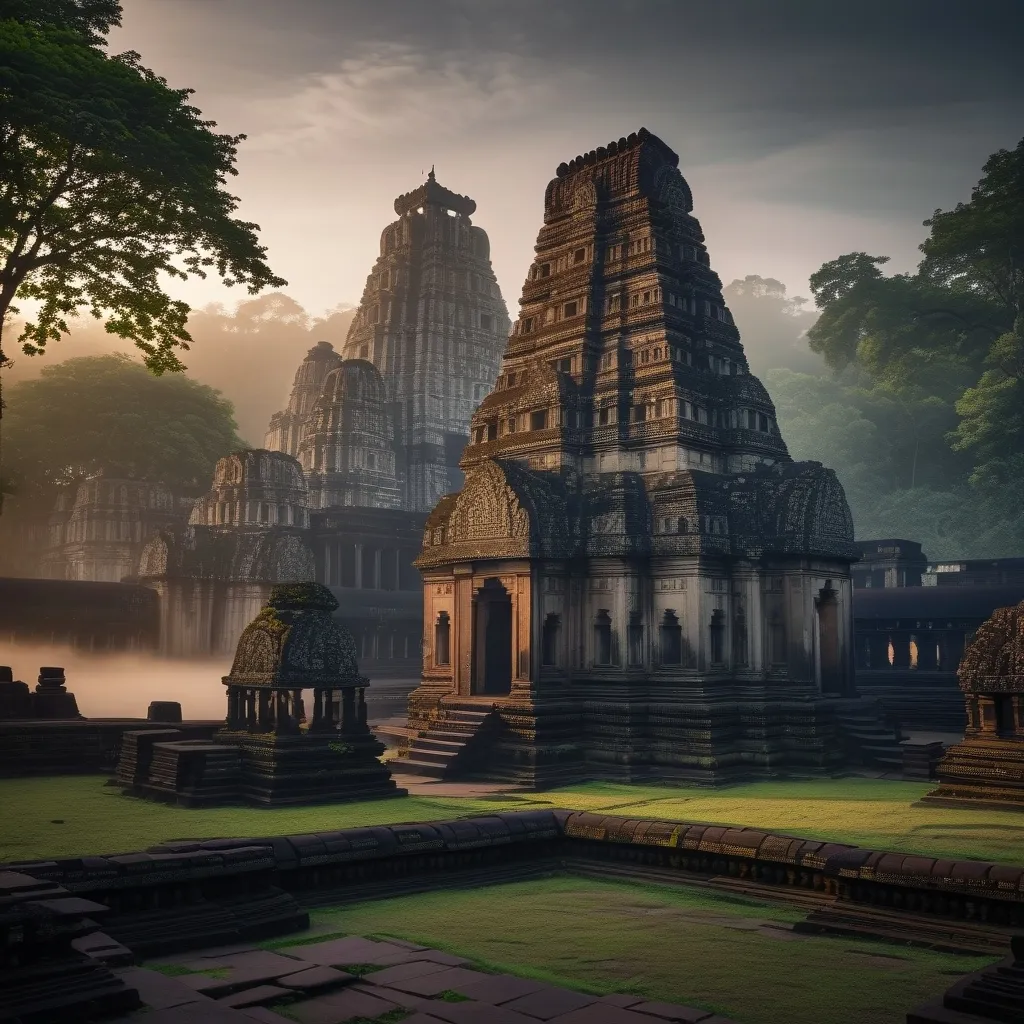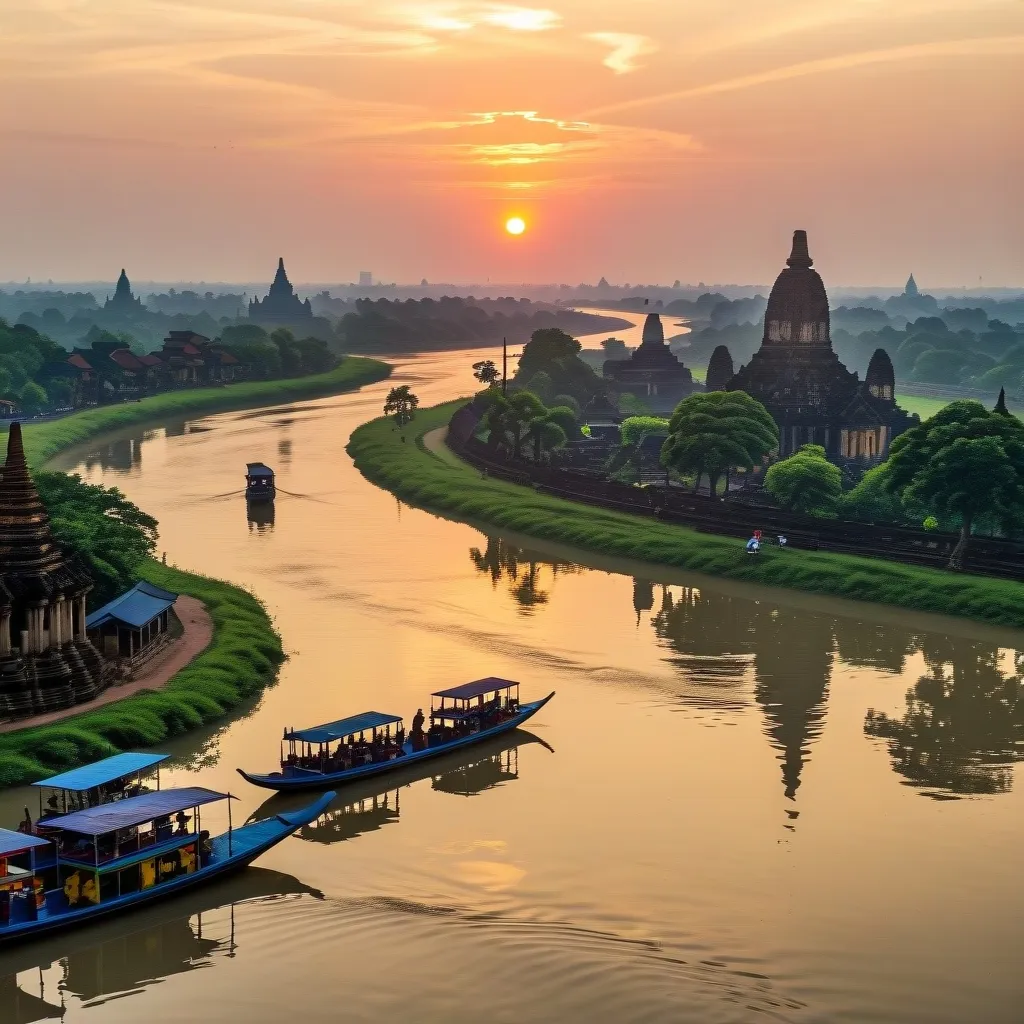Hindu temples are more than just places of worship. They’re like time capsules filled with history, art, and a whole lot of mystery. These architectural beauties, covered in intricate carvings and steeped in centuries of tradition, have been puzzling pilgrims, history buffs, and adventurers for ages. Let’s dive into some of the coolest and weirdest things about these temples that blend history with myth and the everyday with the divine.
Ever heard of a building that doesn’t cast a shadow? Sounds impossible, right? Well, check out the Brihadeeswarar Temple in Thanjavur, Tamil Nadu. This massive temple has a towering vimana (that’s the pointy bit on top) that’s over 60 feet tall. But here’s the kicker - it doesn’t cast a shadow on the ground. Scientists and architects have been scratching their heads over this for centuries.
And that’s not the only temple that likes to mess with physics. Over in Odisha, the Jagannath Temple has a flag that always floats in the opposite direction of the wind. It’s so important that they have to change it every day, or the temple would have to close for 18 years. Talk about high stakes!
Now, let’s talk about some musical magic. The Thanumalayan Temple in Kanyakumari has these cool pillars that make different sounds when you hit them. It’s like a giant stone xylophone that plays the seven notes of Carnatic music. And if that’s not enough to blow your mind, the Airavatesvara Temple near Kumbakonam has stairs that do the same thing. Imagine walking up a musical staircase!
But wait, there’s more! The Veerabhadra Temple in Lepakshi, Andhra Pradesh, has a pillar that doesn’t even touch the ground. It’s just hanging there, defying gravity. You can slide a piece of paper under it. It’s like the temple’s own magic trick.
Speaking of magic, let’s talk about secret chambers and hidden tunnels. The Brihadeeswarar Temple (yeah, the one with no shadow) is rumored to have a secret room full of treasure or ancient texts. People have been trying to find it for years, but no luck so far. It’s like a real-life Indiana Jones movie.
And get this - there’s supposed to be a tunnel system connecting the Gangaikonda Chozhapuram Temple to the Brihadeeswarar Temple. That’s over 40 kilometers! They say the royals used it as an escape route. Imagine sneaking through those dark tunnels. Spooky, right?
Now, if you’re into supernatural stuff, you’ve got to hear about the Mehandipur Balaji Temple in Rajasthan. They’ve got priests who perform exorcisms. Yeah, you heard that right. But be careful if you visit - there are strict rules. No touching anything inside, no photos of people getting exorcised, and whatever you do, don’t look back at the temple when you leave. They say it’s to stop evil spirits from following you home. Yikes!
And then there’s the Kamakhya Devi Temple in Assam. This one’s wild. According to legend, it’s built on the spot where a goddess’s womb fell to earth. Every year during monsoon season, they close the temple for three days because they believe the goddess is menstruating. The water under the temple turns red, and they give out pieces of red cloth as blessings. Talk about a unique period party!
Let’s switch gears and talk about some mind-bending architecture. The Jagannath Temple in Odisha has this huge wheel on top called the Sudarshan Chakra. It weighs a ton and sits 20 feet high, but here’s the cool part - it looks like it’s facing you no matter where you stand in the city. It’s like the Mona Lisa of temple decorations.
Oh, and for some reason, birds and planes don’t fly over this temple. Nobody knows why. It’s like there’s an invisible “No Fly Zone” sign up there.
And the mysteries don’t stop there. In this same temple, they cook the food offerings in seven pots stacked on top of each other. But get this - the top pot cooks first. It’s like the laws of thermodynamics decided to take a vacation.
But these temples weren’t just about weird phenomena and spooky stories. They were the heart of their communities. Think of them as ancient survival bunkers. They were built to withstand natural disasters, with deep foundations and tall towers. The copper on top and the grounding of the inner sanctum protected against lightning. Pretty smart, huh?
Those alcoves in the towers? They weren’t just for show. People used them to store seeds and grains. It was like a community pantry for tough times. And underground, they had vaults for keeping gold and precious stuff safe. It was all about making sure the village could bounce back after a disaster.
Every temple also had these natural spring water tanks called pushkarni. They weren’t just for religious rituals - they helped increase the water table in the village. Talk about ancient water conservation!
And let’s not forget about the free food. Temples would share prasad (blessed food) among devotees. It was like a community meal service. No one went hungry when the temple was around.
The influence of these temples spread far and wide. You can find similar temples in places like Java, Indonesia, and Cambodia. There’s even talk of similarities between Indian temples and ancient structures in Egypt, Turkey, Azerbaijan, Central Asia, and even Central and South America. It’s like these temples were the original trendsetters.
Now, let’s talk about some wild festivals. The Kodungallur Bhagavathy Temple in Kerala has this annual festival called Bharani. People believe the goddess Bhadrakali possesses them during this time. They dress up in red, wave swords around, and sing some pretty raunchy songs. It’s like a supernatural rave meets religious fervor.
Over at the Venkateshwara Temple in Andhra Pradesh, they’ve got this weird ritual where people put their ears on the back of the deity’s statue to hear ocean waves. No one knows why or how, but people swear they can hear it.
And if you think that’s strange, wait till you hear about the Ananthapadmanabha Lake Temple. It’s smack in the middle of a lake, and get this - it’s guarded by a crocodile. But this isn’t your average croc. It supposedly eats the temple’s prasad, including jaggery and cooked rice. A vegetarian crocodile? Now I’ve heard everything!
Indian temples are also pretty good at blending science and spirituality. Take the Thiruvanai kovil in Tiruchirapalli. They’ve got this idol at the bottom of some stairs, and the inner sanctum is always wet. Legend says it’s because a goddess made a Shiva Linga out of water as an apology. It’s like a never-ending water feature, and no one can figure out how it works.
So there you have it. Hindu temples are way more than just places to pray. They’re like these crazy museums of history, art, and mystery all rolled into one. Whether you’re into history, architecture, or just love a good mystery, these temples have got something for everyone. They’re where the everyday world meets the divine, and trust me, it’s one heck of a meeting.
Next time you’re near one of these temples, take a closer look. Who knows what secrets you might uncover? Just remember, if you’re visiting that exorcism temple, don’t look back when you leave. Better safe than sorry, right?






